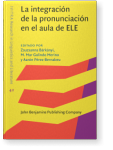Chapter 4
Developing pragmatics in Spanish as an additional language
Enhancing pronunciation through multimodal cues
This chapter delves into the crucial role of pronunciation, particularly prosody, in shaping
meaning and fostering the development of pragmatics in Spanish as an additional language (ELE). Effective
communication not only relies on the literal content of verbal messages, but it also heavily depends on the
appropriate use of oral and non-verbal cues that enrich it. We first explain how speakers employ multimodal strategies
such as speech prosody and body movements to optimise their oral discourse and successfully convey their communicative
intentions. Then we propose to focus on the integration of speech prosody and body movements into pronunciation
instruction and provide illustrations of how to achieve this when teaching speech acts, discourse and information
structure in ELE.
Article outline
- 1.Introduction
- 2.Key concepts: Pragmatics, pronunciation, multimodality, and their interfaces
- 3.Evidence on the benefits of multimodal cues for L2 pronunciation and pragmatic skills
- 4.Pedagogical implementation: Using multimodal cues to teach pronunciation and pragmatic skills in ELE
- 4.1Teaching the expression of basic and complex speech acts in oral reading
- 4.2Teaching how to mark discourse and information structure in spontaneous speech
- 5.Future work
-
References
This content is being prepared for publication; it may be subject to changes.
